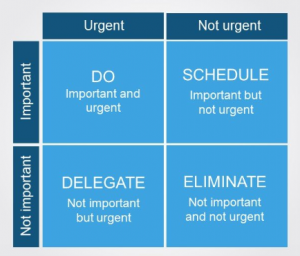Five productivity hacks for busy working women
Do you ever tick one item off your to-do list and then remember five more things? Improving your productivity is a frustrating merry-go-round of endless tasks.
If you’re planning to get organised, we are here to help. We’ve enlisted Melbourne professional organiser Julie Cliff from Space and Time to share her favourite ways to get more done each and every day.
Tomato timer technique
Often getting started is the challenge. Using the tomato (or pomodoro) technique is deceptively easy and simple.
- Cut distractions – turn off your phone and email notifications
- Set a timer for 25 minutes
- Work steadily for that 25 minutes. (No popping on to Daily Mail to check what Victoria Beckham’s up to.)
- When the time’s up, take a five minute break
- Get stuck in for another 25 minutes
You can extend or reduce the timer according to your task. So, if you have a complex presentation to write, stretch it out to fifty minutes. A five minute break is an important part of the process, so don’t skip it.
Why tomato timer? The Italian creator of the technique used a tomato-shaped kitchen timer to finetune the process in the 1980s. (Pomodoro means tomato in Italian.) Get a real-deal tomato timer (we like this pink piggy one) or simply use your smartphone, smartwatch or an app.
Julie’s expert tip: remove distractions to truly power through the task and don’t skip the breaks, they’re important for mental clarity.
Is it urgent, or is it important?
Quite often at work we focus on the report due tomorrow or the sudden demand from the big boss. Meanwhile, the important stuff, like creating a strategic plan for the next quarter, is delayed.
The important/urgent matrix (created by US president Eisenhower) helps you concentrate on what matters. Ask yourself:
- is it urgent? (like a presentation due next week)
- is it important? (like networking, sales calls, long-term planning)
You can decide what is the best use of your time. As Gretchen Rubin says, “the biggest waste of time is to do well something we need not have done at all.” Essentially, the joy of the important/urgent matrix is it helps you avoid those time-wasting unimportant, non-urgent tasks that eat up your precious time.
Julie’s expert tip: Tackling urgent stuff all the time is stressful! So, aim to spend most of your time in the not urgent but important quadrant.
Eat that frog
Yuck! But eating the frog is all about doing the worst job on your list at the start of the day when you are fresh and energised. Entrepreneur Brian Tracy coined the term based on a quote from author Mark Twain, who said:
“If the first thing you do each morning is to eat a live frog, you can go through the day with the satisfaction of knowing that that is probably the worst thing that is going to happen to you all day long.”
Your “frog” is your biggest, most important task, the one you are most likely to procrastinate on if you don’t do something about it.
Julie’s expert tip: Often stressing about an unpleasant task is worse than the task itself. Get it done and the stress is gone.
Want to do it? Diarise it
Often, busy people make the mistake of writing a to-do list but not allocating time in their diary. Using a digital calendar or printed diary, break down each task into 30 minute increments and allocate the necessary time for each item. This works really well if you have a bundle of stuff you need to get done in a day. This is the technique I use myself with great success. Put your “frog” task in first. It’s a good idea to take five minutes the night before to schedule your tasks for the next day. Plus, another benefit of this technique is you’ll learn how long tasks truly take. Bonus: it can help with timesheeting, if you have a job that requires it.
Julie’s expert tip: This helps if you tend to wake in the night stressing about your busy day ahead. Knowing you’ve got it all scheduled can be a comfort to your 3am anxious brain.
Next action to-do list
Let’s say you need to write a plan for your next project launch. That’s a lofty goal. It may take weeks to achieve, with plenty of micro-actions in between. This technique, created by productivity consultant David Allen, suggests you list the next two or three items that need to move the project forward.
So, the next steps for your upcoming project launch are:
- identify key stakeholders
- invite to planning meeting
- agree target launch date
Expert tip: breaking down the steps into manageable chunks, makes it much easier to a) get started and b) maintain momentum.
Want to work with Julie?
Julie has a special offer for Miss Links readers. Book a three hour decluttering or time management session with Julie and get a fourth hour free. You can use the entire four hours in one appointment or break it into two half sessions.
Julie’s services include:
- planning your time to be more efficient
- one-on-one consultation to understand what you need to do daily, weekly and monthly
- creating a schedule that helps you get on top of your to-do list
- decluttering your home
- one-on-one sessions to declutter your wardrobe, kitchen, garage, toys or living spaces
Simply contact Julie on 0413 447 562 or info@spaceandtime.com.au to book your special deal. Limit one per customer and only 10 spaces available. Offer expires 30 November 2019.




